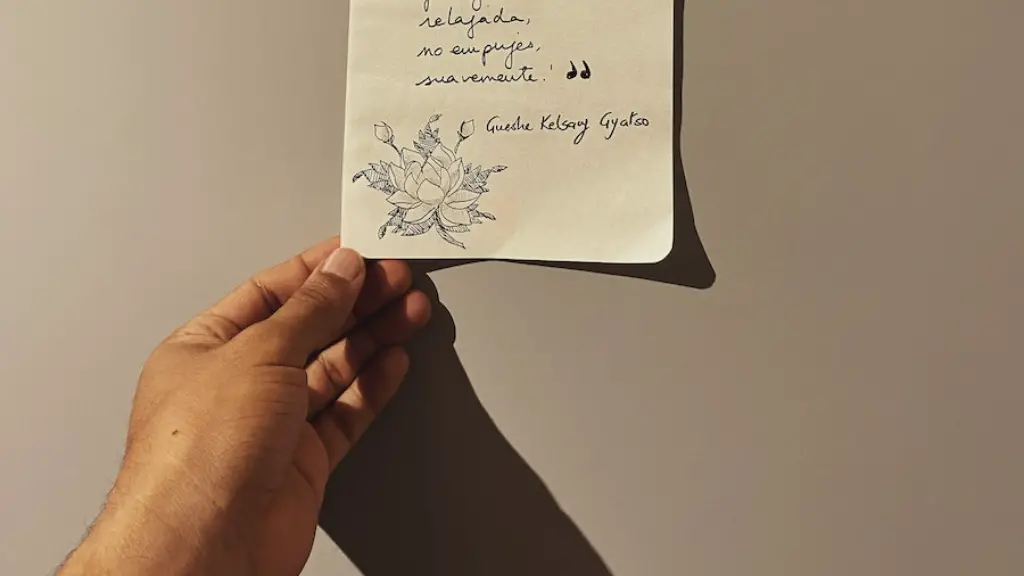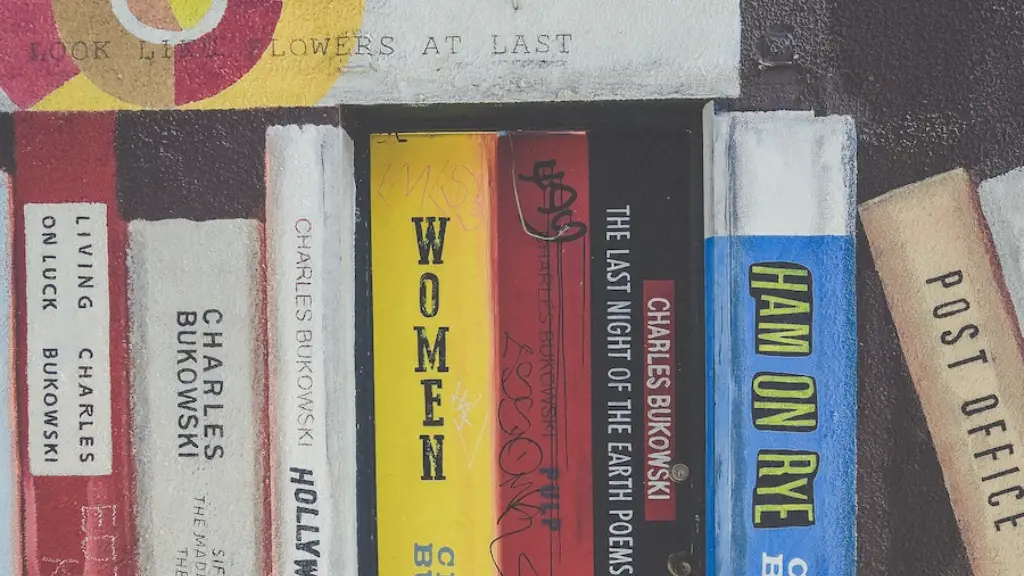Use of Rhyme and Meter
The use of rhyme and meter in poetry is one of the most important elements to consider when evaluating a poem. Rhyme is a sound device used to create a sense of unity within the poem and to create an auditory impact. Rhyme helps to create an emotional connection between the reader and the poem, as certain sounds or words can evoke certain memories or feelings. Meter refers to the use of rhythm or metrical form in poetry. Meter is often used to emphasize certain words in the poem or to create a sort of “beat” that the reader can comprehend.
In terms of foot, meter is the most important factor. Foot is a unit of meter that consists of two or three syllables. For example, if a poem is in iambic pentameter, it is composed of five iambs (a foot of two syllables with the stressed syllable followed by the unstressed syllable) per line. So, the line “But soft, what light through yonder window breaks” would be composed of five iambs: But SOFT, what LIGHT through YONder WINdow BREAKS. Each foot has its own name, so in this example, the line is in iambic pentameter.
Iambic pentameter is one of the most commonly used meters in poetry. Other common meters include trochaic, dactylic, anapestic, and amphibrachic. Meter is important because it serves as a structural skeleton for the poem, establishing a rhythm and flow for the poem that can add nuance or even change its meaning. Using the same example, “But soft, what light through yonder window breaks” is also the first line of William Shakespeare’s “Romeo and Juliet”. In that context, the line has become synonymous with longing and temptation.
The use of meter in poetry can also add a musical quality to the poem. When a poet makes use of rhyme and meter, they are essentially creating a song with their words. This song can be a soothing lullaby, a powerful anthem, or anything in between. It can also help the poet to emphasize a certain emotion or idea that they are trying to convey.
Use of Poetic Devices
Poetic devices are also used in poetry to further analyze the meaning and impact of the work. Poetic devices such as metaphor, simile, imagery, symbol, and personification help to give the poem a certain feeling. Metaphor, for example, is a comparison of two seemingly unrelated concepts. A metaphor can be used to explain a concept or emotion in an abstract way, thereby helping the reader to understand the poem on a deeper level.
Simile is similar to metaphor, but instead of using likening a concept to something else, it makes an explicit comparison between two objects or concepts. Imagery is often used in conjunction with metaphor or simile to help create a mental picture for the reader. Symbolism is another poetic device that is used to create deeper meanings for the poem. Personification is a technique in which inanimate objects or concepts are given human qualities, so that the object can better convey the feelings and emotions of the poem.
Use of Figures of Speech
Figures of speech are often used in poetry to create vivid images or to emphasize certain words or phrases. Figures of speech can be used to emphasize a particular point or emotion, and some of them have become so common that they have almost become clichés. Some of the most common figures of speech used in poetry include alliteration, assonance, hyperbole, and irony.
Alliteration is the repetition of initial consonant sounds, as in “sweet smell of success”. Assonance is the repetition of vowel sounds, as in “the velvet of the night”. Hyperbole is an exaggeration or overstatement, as in “I laughed so hard I cried”. Irony is used to contrast two opposing ideas, often to comedic effect, as in “It’s always sunny in Seattle”.
Figures of speech are used to make the poem more descriptive and create richer images in the reader’s mind. They are also effective in creating deeper meanings and adding an emotional depth to the poem. By making use of figures of speech, the poet is able to convey complex ideas and emotions through a single phrase or image, allowing the reader to immediately connect with the poem.
Use of Themes and Symbolism
Themes and symbolism are two other important elements in a poem. Themes are the underlying messages or ideas that the poet is trying to convey, often through symbolism. Symbolism can be found throughout a poem, from the symbols that are used to represent the characters, settings, and emotions in the poem, to the references and images that are used to evoke certain ideas or feelings. Symbolism plays a vital role in conveying the poem’s purpose and meaning.
The use of themes and symbolism in poetry can be used to create a sense of harmony within the poem and to ensure that the poem has a strong and clear message that can be grasped by the reader. When a poet is able to effectively use themes and symbolism, they are able to turn the poem into something that is truly moving and powerful.
How to Create a Poem Using Foot
When creating a poem, the use of foot is essential. The use of different feet can help to create a certain rhythm or meter that will give shape to your poem. It is important to pay attention to the number of syllables in each line and the stress patterns that you are using, as this will determine the meter of the poem. It is also important to be mindful of the words you are using and consider what sort of images and associations they evoke. By taking these elements into account, you will be able to create a poem using foot that will be powerful and effective.
Understanding the Significance of Foot in Poetry
Understanding the significance of foot in poetry is important for anyone wanting to make full use of the potential of their writing. Being able to use foot and meter effectively can help to create a poem that is powerful and impactful. Foot allows the poet to control the pacing and rhythm of the poem, which can help to create a sense of emotional depth that resonates with the reader. It can also be used as a tool to emphasize certain words and ideas in the poem.
Uses of Foot in Generations of Poets
Foot has been used by poets for centuries, and it has been used in different ways throughout different generations. In the Elizabethan and Jacobean eras, for example, poets heavily relied on the use of iambic pentameter to construct their poems. In the Romantics period, poets such as William Wordsworth and John Keats used the use of foot to create a pastoral and poetic tone. In the modern era, foot is still used in various ways, from slow and gentle lines to fast and powerful raps.
Applications of Foot to Modern Poetry
As poetry has evolved throughout the centuries, so has the use of foot. Many modern poets use foot in new and innovative ways, using it as a tool to emphasize certain words or feelings within the poem. Foot can also be used to create a pattern within the poem, aiding in its structure and development. Understanding and applying foot correctly can give your poem a unique sound, helping it stand out among others.
The Importance of Foot in Poetry
The use of foot in poetry is essential in creating poems that are powerful and meaningful. Foot allows the poet to control the pacing and emotional impact of their poem, as well as to create patterns within the poem to add structure. Knowing and understanding foot can help the poet to convey their message or idea in a meaningful and impactful way.


